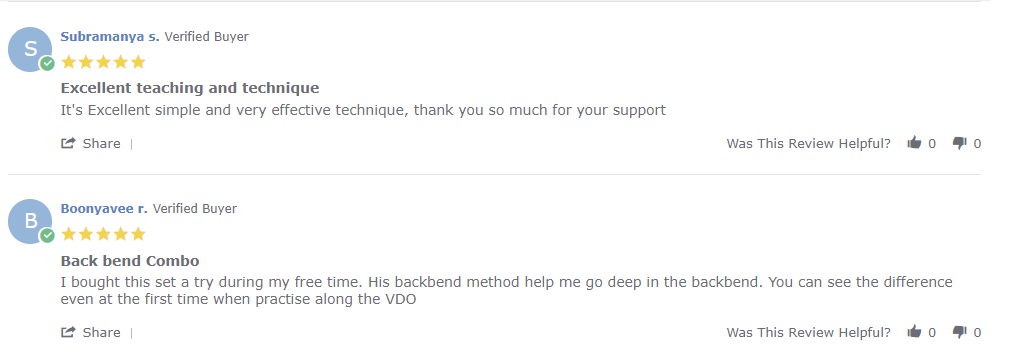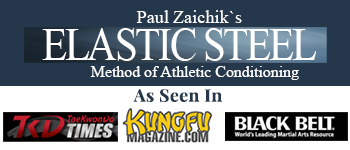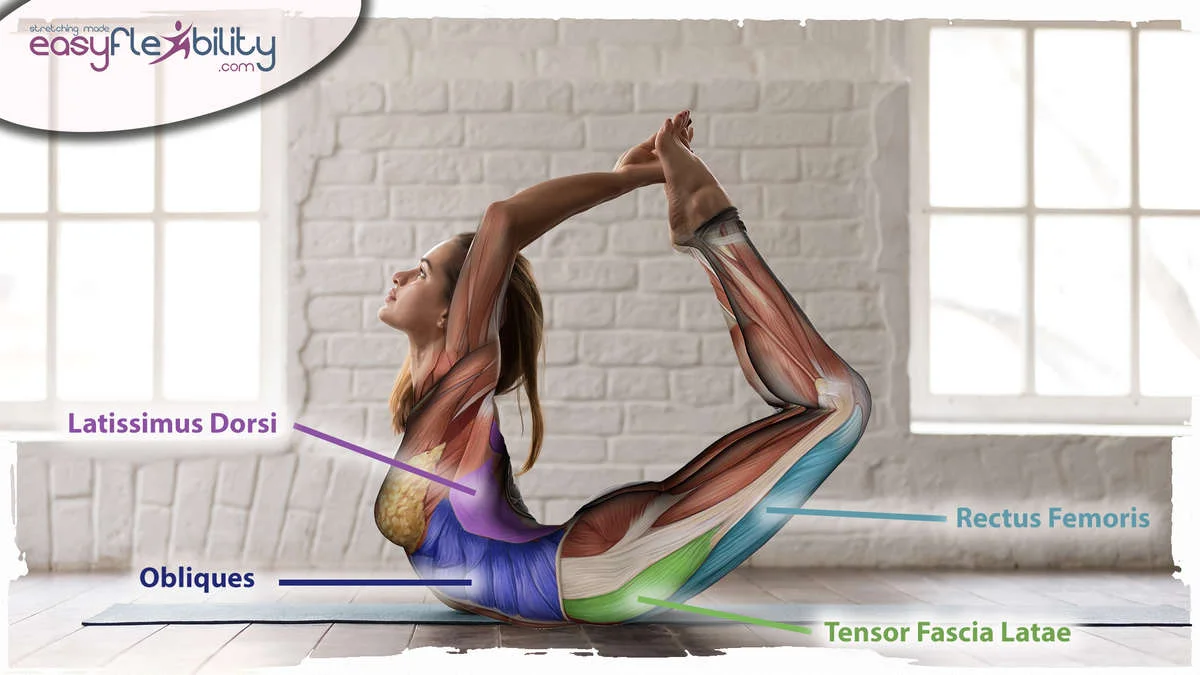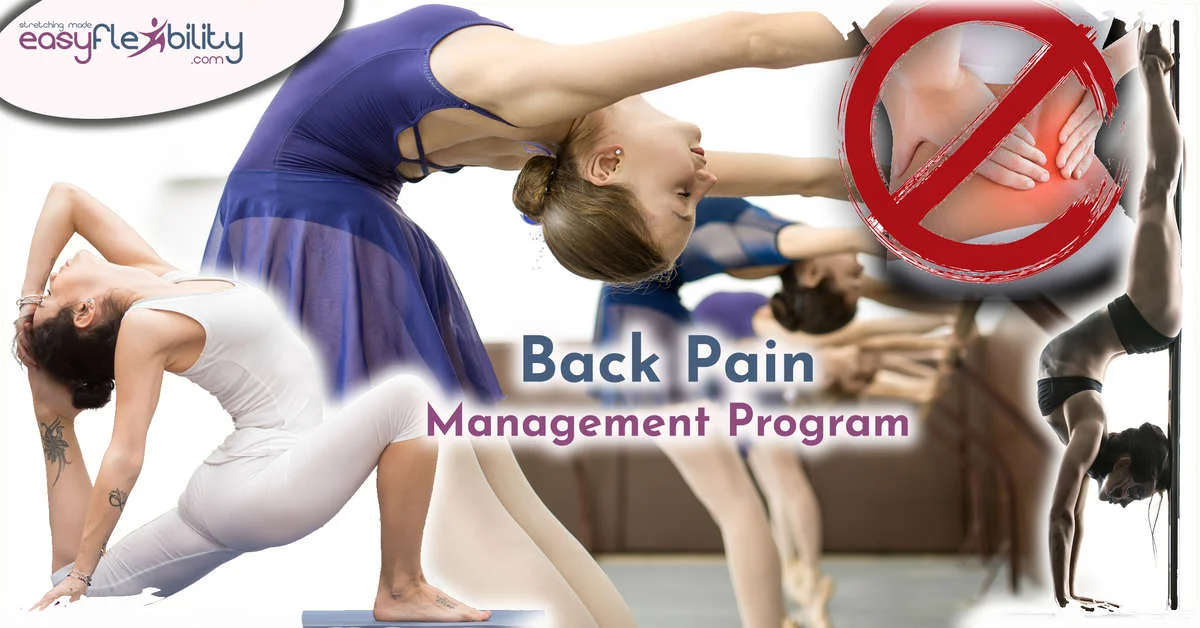Comparing Back Stretching, Bending, and Pain Relief Training: Key Differences Explained

Comparing Back Stretching, Bending, and Pain Relief Training: Key Differences Explained
And then there are the folks looking for something a bit different, like fixing a tilt - you know, when the lower back is doing its own thing, either sticking out too much or not enough. Plus, every now and then, someone comes along wanting help with their upper back, but really, they're just trying to straighten up their posture.
If you're just dipping your toes into the flexibility training pool, or even if you've paddled around a bit but not with our EasyFlexibility stuff, this blog post might just be the lightbulb moment you've been waiting for.
What is Back Bending? What does it mean to do a Back Bend?
BACK BENDING COMBO - YOUR ULTIMATE BACK FLEXIBILITY GUIDE!
But let's face it, the journey to limberness is often paved with groans over back aches and creaky joints. Fear not, for this odyssey doesn't have to be a Herculean ordeal.
Here's the scoop: mastering the art of the Back Extension isn't just for the elite athletes among us. Dancers, gymnasts, figure skaters, wrestlers, and even the weekend sports warriors—everyone stands to gain from a spine that bends like a willow.
Enter the game-changing Zaichik Stretching Techniques, your secret weapon to unlocking flexibility fast, minus the "ouch" factor. Ready to astound yourself with the flexibility feats you'll achieve? Plus, think of the health perks as the cherry on top of your newfound agility. Let the bending begin!

Understanding Back Stretching: What Does It Involve?
A physical therapist or chiropractor may use a device designed to elongate the spine by gently pulling the upper and lower body in opposite directions. Additionally, hanging from a bar with your feet off the ground, or using special boots to hang upside down, can effectively stretch and decompress the spine.
Unraveling Back Pain: Identifying Your True Needs and Finding the Right Relief Program
It's common for individuals to seek out a program focused on alleviating lower back pain. However, it's worth noting that sometimes, the solution extends beyond merely concentrating on the body's core and hips, as some learners believe exploring additional areas is also crucial for comprehensive relief.
Dive into this online treasure trove where Paul Zaichik will guide you through a workout that's all about boosting your lower back's happiness. We're talking about stretching and strengthening the muscle crew around your lumbar to bring balance and safe vibes to your spine.
Ready to kick back pain to the curb in less than 15 minutes a day?
This online course is your golden ticket to a series of smooth moves in a progressive program aimed at erasing back pain and warding off future sneak attacks!
- A muscle magic sequence for those aching backs and for anyone keen on keeping their back in tip-top shape for the long haul.
- A quick, 15-minute morning routine to supercharge your day.
- A longer, 25-minute routine to deeply stretch your lower back and its buddies.
- Muscle-building secrets to guard your lower back and master the lumbar arch.
- Zen breathing and mind tricks to boost your daily mojo and overall well-being.
Are you in search of a Perfect Posture Program when you mention wanting a back stretching program?
The problem?
Too many exercises and non are specific enough to improve the way a person bears his or her body.
We fix these issues!
- Head thrown back
- Chin stuck forward
- Upper and middle back form a convex ball
- Arm rotated in
- Scapula's protracted, etc.
Each section of the body concentrated on and taken care off piece by piece.
It takes at most few weeks before a person begins to look better and most importantly to feel better.
Are you dealing with Lordosis or Kyphosis and in search of a stretching and back bending program to address these conditions?
This might involve managing an excessive curve, as seen in Lordosis, or introducing a slight curve to a flat back. The goal is to achieve a balanced curvature in the lower back area.
Exploring the Differences: Back Bending vs. Back Stretching
Back bending and back stretching may seem similar, but they serve distinct purposes. This article aims to clarify the differences between these two terms, which are often used interchangeably.
When you bend backward, you're stretching the muscles in the front of your body. This movement may also strengthen the muscles in the back of your body, or even those in the front, depending on your goals.
Within the EasyFlexibility system, the choice of supporting or strength exercises that complement flexibility training varies significantly with the skill being developed. This means that for one skill, you might focus on strengthening the muscles that oppose the movement (antagonist muscles), while for another, you might strengthen the muscles that assist the movement (agonist muscles).
For instance, in back bending, you stretch the front body muscles. However, the specific muscles you choose to strengthen will depend on the particular pose or activity you're engaging in with that back bend.
For those familiar with the EasyFlexibility blog, you're likely aware that our system goes beyond merely holding a position and hoping for improvement. Instead, we focus on isolating muscles based on their actions, which can significantly accelerate flexibility gains.
Incorporating arm movements into your back bending, such as when performing a bridge, targets additional muscles for stretching. This includes the rhomboids, teres major, and depending on your arm positioning, the subscapularis, posterior deltoid, teres minor, teres major, and latissimus dorsi. While many of these muscles are located in the back, others, like the pectoralis minor and the sternal part of the pectoralis major, are found in the front.
If your goal is to stretch the back in the traditional sense, focusing on the muscles located there, you'll be targeting the spinal extensors and possibly the quadratus lumborum, especially if your arms are engaged in the movement.
Interestingly, the muscles stretched during a bridge are similar to those stretched when hanging from a bar. However, if your arms are not involved, the dynamics of back bending and back stretching change significantly.
A typical example of back stretching could be lying on your back and performing a crunch. This action uses reciprocal inhibition, contracting the front muscles while stretching those in the back. If you use your arms to enhance the stretch, like attempting to pull your head towards your knees, this becomes a passive stretch for your back.
It is not common among athletes to have tight back muscles. When it comes to forward stretching or stretching of the back muscles, it happens but it's not common. Among people who are not active it's more common.
When athletes are looking for flexibility, in terms of stretching forward, they're usually not looking for flexibility in their back. They're looking for flexibility in their hamstrings and glutes and other muscles that restrict forward bending. And the reason for that is because of the way basic conditioning exercises are designed in athletics.
Because most people have poor posture and day to day activities involve movement of the back, most do not have a problem with flexibility of their spinal extensors. Of course, some people are in sports where they may want an extreme flexibility in their spinal extensors beyond what they already have.
For example, grapplers. But for most people, it's not really an issue. The issue is more about back bending, if someone needs that.
Not everyone needs that in their sports or activities. Some people don't need it,
but they want it, and that's another story. And for most people, again, it's forward bending from the hips. That's where the restriction is, not forward bending from the spine.
I hope that this post gave you a brief overview of the difference between back bending and back stretching, and will help you understand what you are actually looking for. If you have any questions feel free to reach out to us by clicking here and we’ll be more than happy to assist you in finding the right program for your particular issue.






